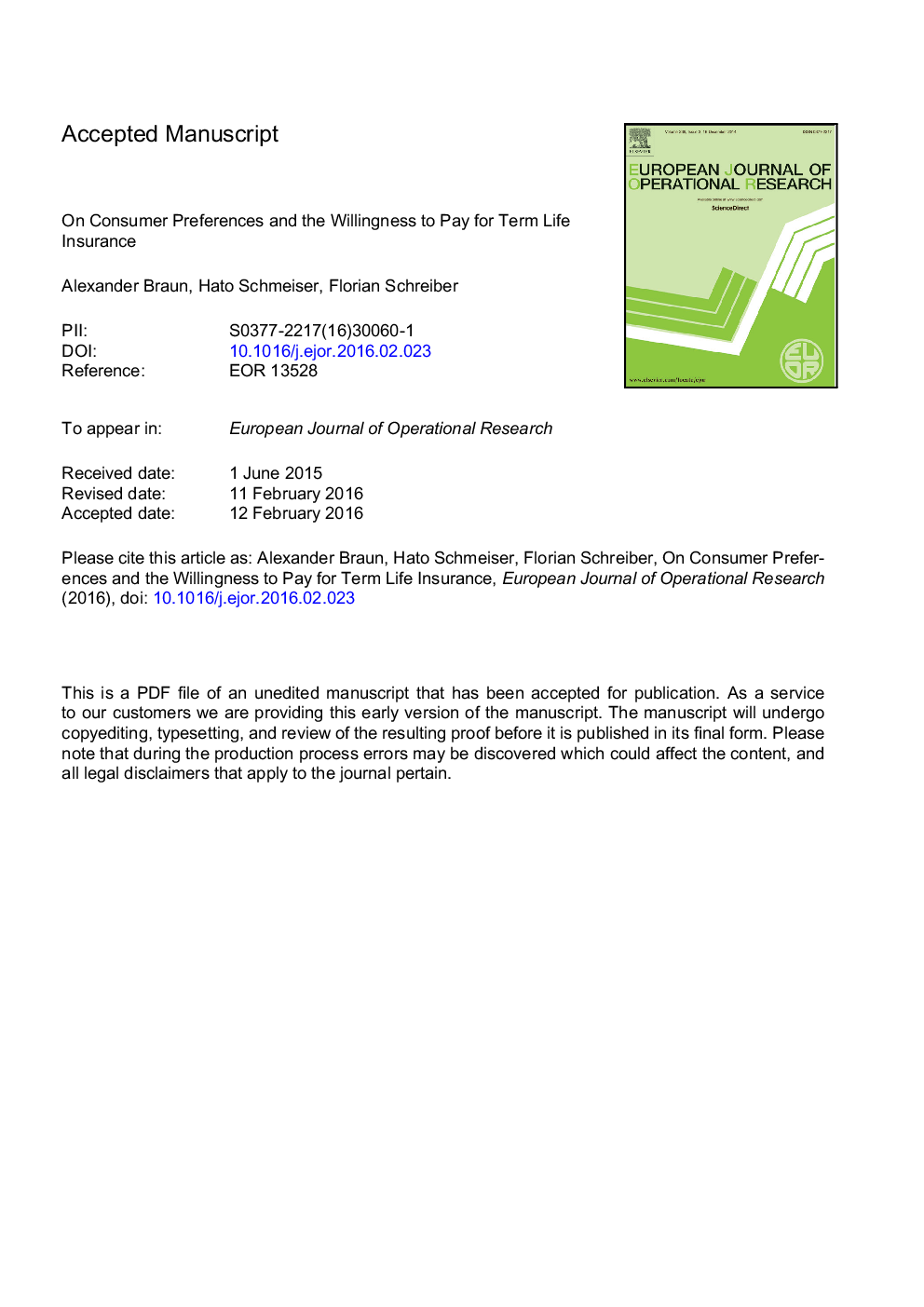| Article ID | Journal | Published Year | Pages | File Type |
|---|---|---|---|---|
| 6895559 | European Journal of Operational Research | 2016 | 35 Pages |
Abstract
We run a choice-based conjoint (CBC) analysis for term life insurance on a sample of 2017 German consumers using data from web-based experiments. Individual-level part-worth profiles are estimated by means of a hierarchical Bayes model. Drawing on the elicited preference structures, we then compute relative attribute importances and different willingness to pay measures. In addition, we present comprehensive simulation results for a realistic competitive setting that allows us to assess product switching as well as market expansion effects. On average, brand, critical illness cover, and underwriting procedure turn out to be the most important nonprice product attributes. Hence, if a policy comprises their favored specifications, customers accept substantial markups in the monthly premium. Furthermore, preferences vary considerably across the sample. While some individuals are prepared to pay relatively high monthly premiums, a large fraction exhibits no willingness to pay for term life insurance at all, presumably due to the absence of a need for mortality risk coverage. We also illustrate that utility-driven product optimization is well-suited to gain market shares, avoid competitive price pressure, and access additional profit potential. Finally, based on estimated demand sensitivities and a set of cost assumptions, it is shown that insurers require an in-depth understanding of preferences to identify the profit-maximizing price.
Related Topics
Physical Sciences and Engineering
Computer Science
Computer Science (General)
Authors
Alexander Braun, Hato Schmeiser, Florian Schreiber,
